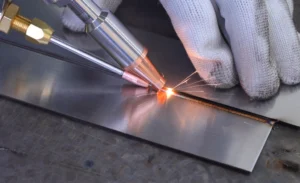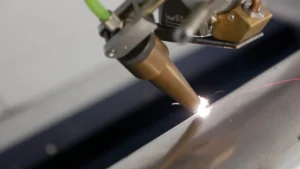In the realm of modern online commerce, selecting the most efficient welding methods is crucial. To boost online sales, understanding welding techniques is key. This analysis delves into the differences among welding methods and their impact on online sales strategies. By uncovering how welding methodologies influence online business success, we reveal ways to optimize sales through innovative welding solutions. Explore the transformative power of welding techniques for online sales growth.
Key Takeaways
- Material type and thickness significantly influence the choice of welding technique
- Performance evaluation focuses on factors like penetration depth and heat-affected zone size
- Welding analysis can enhance online sales through optimized product offerings and marketing strategies
- The impact of welding methodologies on factors like strength, speed, and precision is crucial
Importance of Welding Method Comparison
In the realm of industrial fabrication, the meticulous scrutiny and comparison of welding methods prove to be a quintessential practice for ensuring optimal efficiency and quality in production processes. Welding, a fundamental process in manufacturing, encompasses various methods such as MIG (Metal Inert Gas), TIG (Tungsten Inert Gas), and Stick Welding. Each technique possesses distinct characteristics that impact factors like strength, speed, and precision in the welding process.
Comparative analysis of welding methods allows manufacturers to evaluate the pros and cons of each technique concerning specific project requirements. For instance, while MIG welding offers high productivity and is suitable for materials like aluminum and stainless steel, TIG welding provides superior quality and control, making it ideal for intricate designs and thin materials. On the other hand, Stick Welding, though slower, is versatile and can be used effectively in outdoor environments or on rusty materials.
Types of Welding Techniques
Continuing the exploration of welding methodologies, the discussion now shifts towards elucidating the various types of welding techniques available within the industrial fabrication domain.
- Arc Welding
- Shielded Metal Arc Welding (SMAW)
- Gas Metal Arc Welding (GMAW)
- Resistance Welding
- Spot Welding
- Seam Welding
These techniques play a pivotal role in the manufacturing sector, offering diverse solutions for joining materials effectively.
Arc welding encompasses methods like Shielded Metal Arc Welding (SMAW) and Gas Metal Arc Welding (GMAW), which utilize electricity to create an arc between the base material and a consumable electrode. On the other hand, resistance welding includes processes such as Spot Welding and Seam Welding, where pressure and heat are applied to join materials.
Understanding these welding techniques is crucial for professionals in the industry, as each method has its unique applications and benefits, ultimately influencing the quality and efficiency of the fabrication process.
Factors Influencing Welding Method Selection
Factors that influence the selection of welding methods play a critical role in determining the most suitable approach for specific fabrication requirements. The decision-making process involves careful consideration of several key elements to ensure the optimal choice is made.
One significant factor is the material being welded, as different welding techniques are better suited for specific types of materials. For instance, while TIG welding is ideal for stainless steel and aluminum, MIG welding is more commonly used for mild steel.
Additionally, the thickness of the materials being joined influences the selection of the welding method, with certain techniques being better suited for thin or thick materials. The desired weld quality, production speed, and cost considerations also impact the decision-making process.
Factors such as the required strength of the weld, the need for precision, the desired speed of production, and budget constraints all play a role in determining the most appropriate welding method for a particular fabrication project. By carefully evaluating these factors, welders can select the method that best aligns with the specific requirements of the task at hand.
Performance Metrics for Welding Methods
The evaluation of welding methods extends beyond the initial selection factors to encompass rigorous performance metrics that gauge the efficiency and effectiveness of each technique in achieving desired fabrication outcomes.
- Penetration Depth
- Measure the depth of weld penetration to assess the welding method’s capability to create strong bonds between materials.
- Deeper penetration often signifies a more robust weld, crucial for structural integrity in various applications.
- Heat Affected Zone Size
- Evaluate the affected area around the weld to determine the extent of heat impact on the material.
- Minimizing the heat-affected zone is essential to maintain the base material’s properties and prevent distortions in the welded structure.
Enhancing Online Sales Through Welding Analysis
Enhancing online sales through meticulous welding analysis is a strategic approach that leverages data-driven insights to optimize product offerings and marketing strategies. By conducting a thorough comparative analysis of welding methods, businesses can identify the most cost-effective and high-quality techniques to enhance the production process. This analysis allows companies to streamline their manufacturing operations, leading to improved product quality, reduced costs, and ultimately increased online sales.

Through welding analysis, businesses can assess the performance of different welding methods in terms of strength, durability, and aesthetic appeal. By understanding the strengths and weaknesses of each technique, companies can make informed decisions about which methods to employ in their production processes to meet customer demands effectively.
Furthermore, welding analysis can also help businesses identify opportunities for innovation and product development. By experimenting with various welding techniques and materials, companies can create unique products that resonate with their target market, thereby attracting more online customers and driving sales growth. In essence, welding analysis serves as a valuable tool for businesses looking to enhance their online sales through improved product quality and innovation.
Implementing Findings for Business Growth
Implementing the insights gained from the comparative analysis of welding methods is crucial for driving business growth and optimizing production processes. To leverage the findings effectively, businesses can take the following steps:
- Adopting Best Practices:
- Implement the most efficient welding technique identified in the analysis.
- Train employees on the recommended methods to ensure consistent quality and productivity.
- Investing in Technology:
- Upgrade equipment to align with the superior welding method.
- Utilize automation where possible to enhance efficiency and accuracy in welding processes.
Frequently Asked Questions
Can Comparative Analysis of Welding Methods Help in Improving Welding Quality?
Comparative analysis of welding methods is instrumental in enhancing welding quality. By evaluating various techniques, identifying strengths and weaknesses, and implementing best practices, significant improvements can be made to ensure high-quality welds with precision and durability.
How Can Businesses Benefit From Comparing Different Welding Techniques?
Businesses can benefit from comparing different welding techniques by identifying the most cost-effective, efficient, and high-quality methods for their specific needs. This analysis can lead to improved productivity, reduced costs, and enhanced output quality.
Are There Specific Industries That Can Benefit the Most From Conducting a Comparative Analysis of Welding Methods?
Conducting a comparative analysis of welding methods can greatly benefit industries like automotive, aerospace, and construction. These sectors require high-quality welds for structural integrity and performance, making it crucial to identify the most suitable welding techniques through detailed comparisons.
What Are Some Challenges That Businesses May Face When Trying to Implement Findings From a Welding Technique Comparison?
Implementing findings from a welding technique comparison may pose challenges such as adapting workforce skills, investing in new equipment, and modifying existing processes. Overcoming these hurdles requires strategic planning, training, and a commitment to innovation.
How Can Online Sales Be Directly Impacted by the Results of a Welding Method Analysis?
Online sales can be directly impacted by the results of a welding method analysis through improved product quality, faster production times, and cost efficiencies. Optimizing welding techniques can enhance product offerings, streamline operations, and increase profitability.
Conclusion
In conclusion, the comparative analysis of welding methods is essential for optimizing online sales strategies. By understanding the types of welding techniques, factors influencing method selection, and performance metrics, businesses can make informed decisions to enhance their online sales performance. Implementing the findings from welding analysis can lead to significant business growth and success in the competitive online commerce landscape.
You May Also Like:


